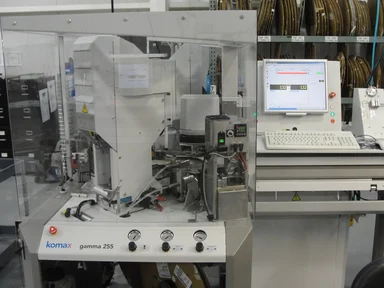In today’s global economy, automation is essential for wire harness manufacturers in providing uniformity and consistency that can ensure product quality. While many aspects of the wire harness production still involve manual assembly, one vital step in wire harness assembly can be accomplished efficiently through automated equipment and processes. Cutting, crimping, and stripping machines offer high speed & reliable solutions for wire harness manufacturers. The machines can cut wire to length, easily strip both ends, apply the pins and perform pull-force testing as established in the pre-setup program.
Why Automate?
 The capability to perform wire and cable processing by utilizing fully automated machinery to cut, strip, and terminate wires and cables is efficient and cost-effective. The process ensures precision and high repeatability necessary for stripping with different insulation materials, and in achieving consistent cutting quality and dimensional accuracy for processed conductors. The prime benefits of such automated solutions is the reduction of labor hours to assemble harnesses, an increase in productivity, and cutting wire-related failures by half. But there is more…
The capability to perform wire and cable processing by utilizing fully automated machinery to cut, strip, and terminate wires and cables is efficient and cost-effective. The process ensures precision and high repeatability necessary for stripping with different insulation materials, and in achieving consistent cutting quality and dimensional accuracy for processed conductors. The prime benefits of such automated solutions is the reduction of labor hours to assemble harnesses, an increase in productivity, and cutting wire-related failures by half. But there is more…
Automation is about combining control systems and technology to replace continuous human physical and mental labor in assembly and engineering, allowing human interaction to be applied to more creative, innovative, operational, and technical processes. Automation benefits manufacturers in applications where a high degree of precision and accuracy is required.
Downsides of Manual Processing
An inherent margin of error accompanies manual processing. Cause of failures in wire harness assembly is primarily related to incorrect wiring, and damaged pins and connectors associated with human error. True, machinery or equipment can malfunction at times. However, once a machine is programmed and operational, it is less prone to make mistakes. Obviously, machines do not get distracted, bored, or tired from repetitive work, and can process more in less time with higher levels of efficiency. In wire harness manufacturing processes, the result is an improved product of higher quality.
Product Uniformity
With the improvement in the quality of components, automation in manufacturing processes brings an increase in productivity, but also consistency and uniformity of products. Component uniformity and product quality are interrelated and vital. Automated production processes ensure standardization of parts and components, which, in turn, are produced in shorter time periods with consistency. Fully automated cut, strip and crimp machines automate tasks in wiring harness processing, such as fixed lengths, precise stripping, or balanced terminal pressure, that not only offer increased productivity, but ensures each wire harness consistently meets product quality standards.
Quality Control
Automated cutting, stripping, and crimping machines offer process monitoring that optimizes quality control while components are being made. Monitoring is fully integrated into the system—crimp force monitoring, seal monitoring, splice monitoring, as well as a detection system to monitor for wire end and knots—even comprehensive sorting of the good from bad components. The system performs at high speed, with efficiency and reliability, and ensures that all processes of cutting, stripping and terminating are to exact specification. Fully automated crimping machines are also capable of twisting and tinning wires to a wide range of lengths and cross sections, and perform processing options such as full tinning, or tip tinning.
Production Run Capacity
To ensure consistency and quality, an automated cut, strip, and crimp machine is essential for wire harness manufacturers who require high-volume wire processing. They are also crucial to wire harness manufacturers with high-mix, low-volume production needs that rely on rapid changeover capability that automation provides. In either instance, high-volume production or for quick changeover capability, fully automated cut, strip, and crimp machines offer high efficiency and ensure the reliability of wire and cable components.
Advantages of automated cutting, stripping, and crimping over manual assembly are increased productivity and an improved quality of products manufactured with precision and accuracy, and with less error. Automated processes optimize quality control, are cost-effective, and produce components at higher output and high efficiency. Though all automation processes in wire assembly are not yet fully realized, the automated machines that perform vital cut, strip and crimp tasks and procedures in the production of components are—to the benefit of wire harness manufacturers.


